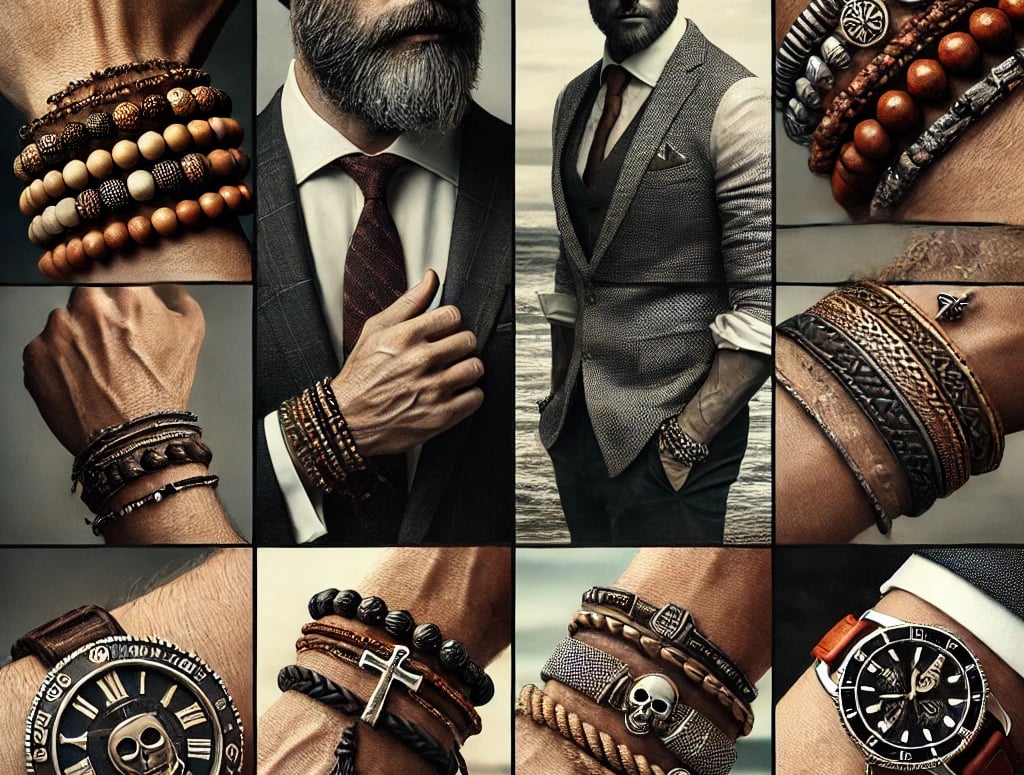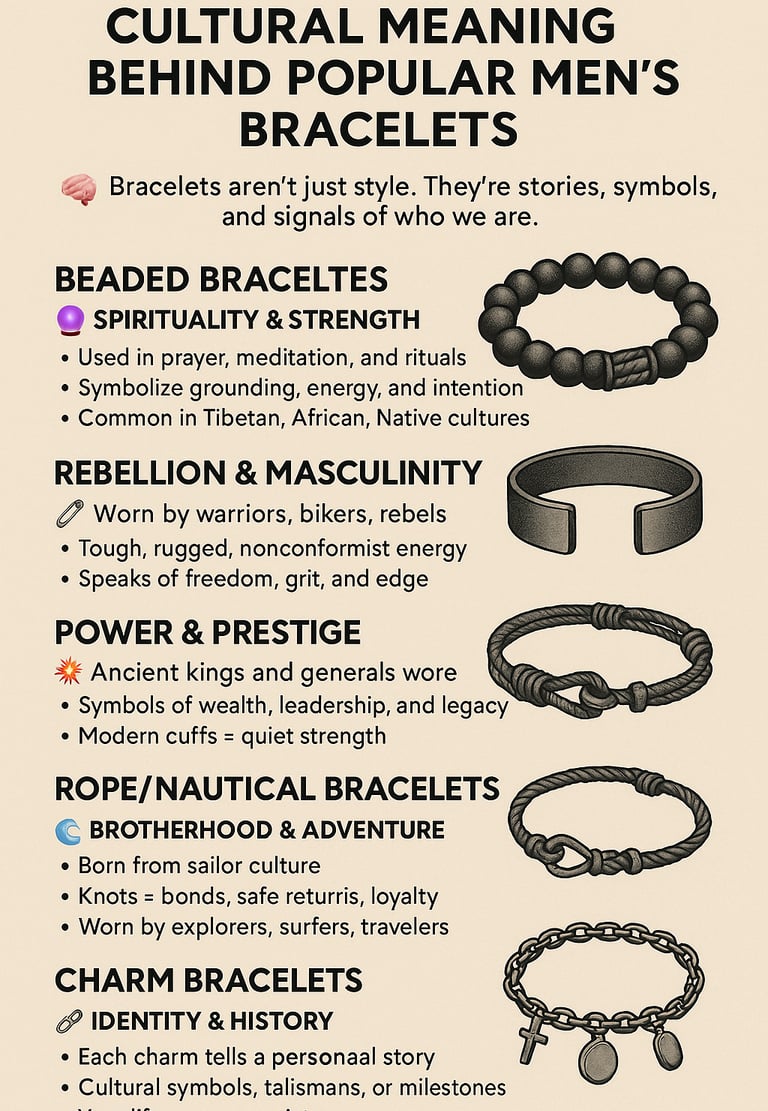Cultural Meaning Behind Popular Men's Bracelets
Bracelets aren’t just accessories. For men, they’ve been symbols of identity, belief, power, and connection for thousands of years. Long before Instagram and fashion blogs, bracelets carried deep cultural meaning—and in many parts of the world, they still do.
7/15/2025


Cultural Meaning Behind Popular Men's Bracelets
Bracelets aren’t just accessories. For men, they’ve been symbols of identity, belief, power, and connection for thousands of years. Long before Instagram and fashion blogs, bracelets carried deep cultural meaning—and in many parts of the world, they still do.
Here’s a breakdown of some of the most popular styles today and the real stories behind them.
1. Beaded Bracelets: Spirituality and Strength
Origins:
Beaded bracelets are some of the oldest forms of wristwear. Found in African, Tibetan, Native American, and Hindu cultures, they often symbolized spiritual beliefs, protection, and connection to nature.
Cultural Meaning:
Tibetan mala beads are traditionally used in meditation and prayer. Each bead counts a chant or mantra. Wearing them isn’t just a trend—it signals mindfulness and spiritual grounding.
African trade beads carried social status and history. Some were used as currency, others told stories passed through generations.
In modern fashion, men wear beaded bracelets as a blend of style and symbolism—signaling a grounded, intentional identity.
2. Leather Bracelets: Rebellion and Masculinity
Origins:
Leather has long been associated with warriors, cowboys, and bikers. In ancient times, soldiers strapped leather around their wrists for protection and grip. Later, it became a symbol of raw masculinity.
Cultural Meaning:
Biker culture adopted leather as a uniform of defiance and brotherhood. A leather bracelet can quietly say, “I don’t follow your rules.”
Bohemian and surfer styles use leather to reflect freedom and simplicity—a lifestyle that values the road over routine.
Today, leather bracelets are often about attitude: strong, no-nonsense, maybe a little wild.
3. Metal Cuffs: Power and Prestige
Origins:
From Roman generals to West African kings, metal cuffs have always symbolized authority. Gold, silver, bronze, and iron were worn to show wealth, status, and sometimes divine favor.
Cultural Meaning:
In ancient Egypt, cuffs were worn by nobility and priests. They were engraved with symbols meant to protect or bless.
In Native American cultures, silver cuffs adorned with turquoise were used in ceremonies and as heirlooms.
Modern cuffs, whether minimalist or bold, often signal control, success, and refined strength.
This style says: I’m in charge—but I don’t need to shout about it.
4. Rope and Nautical Bracelets: Brotherhood and Adventure
Origins:
Sailors used rope bracelets to remember their voyages and protect them at sea. Knots often carried meaning—representing bonds, loyalty, and safe returns.
Cultural Meaning:
Nautical knots represent unbreakable ties—brotherhood, loyalty, or love.
Woven rope bracelets are popular in coastal and surf cultures, hinting at a connection to the ocean and a free spirit.
Today, these bracelets are a subtle nod to adventure and belonging. They’re especially popular with men who live for the outdoors—or just want to look like they do.
5. Charm Bracelets: Identity and Personal History
Origins:
Charms go back to prehistoric times, when hunters carried animal bones or teeth for good luck. Over time, charms evolved into symbolic tokens—each one telling a story.
Cultural Meaning:
In modern-day Italy, charm bracelets often carry religious symbols or family crests.
In South Asia, talismanic charms are worn to ward off evil or attract fortune.
Men’s charm bracelets today reflect personality more than tradition. A skull, an anchor, a cross—each charm means something. They’re like wearable autobiographies.
Final Thoughts: Why It Matters
Men’s bracelets aren’t just fashion—they’re language. What you wear on your wrist can say where you’re from, what you value, and what you’re about.
Wearing one with meaning isn’t just stylish. It’s intentional. Whether it’s a gift from your father, a piece picked up on your travels, or something that represents who you’re becoming—bracelets are modern relics of ancient messages.
So next time you see a guy wearing a bracelet, look closer. You might be seeing more than style. You might be seeing a story.

